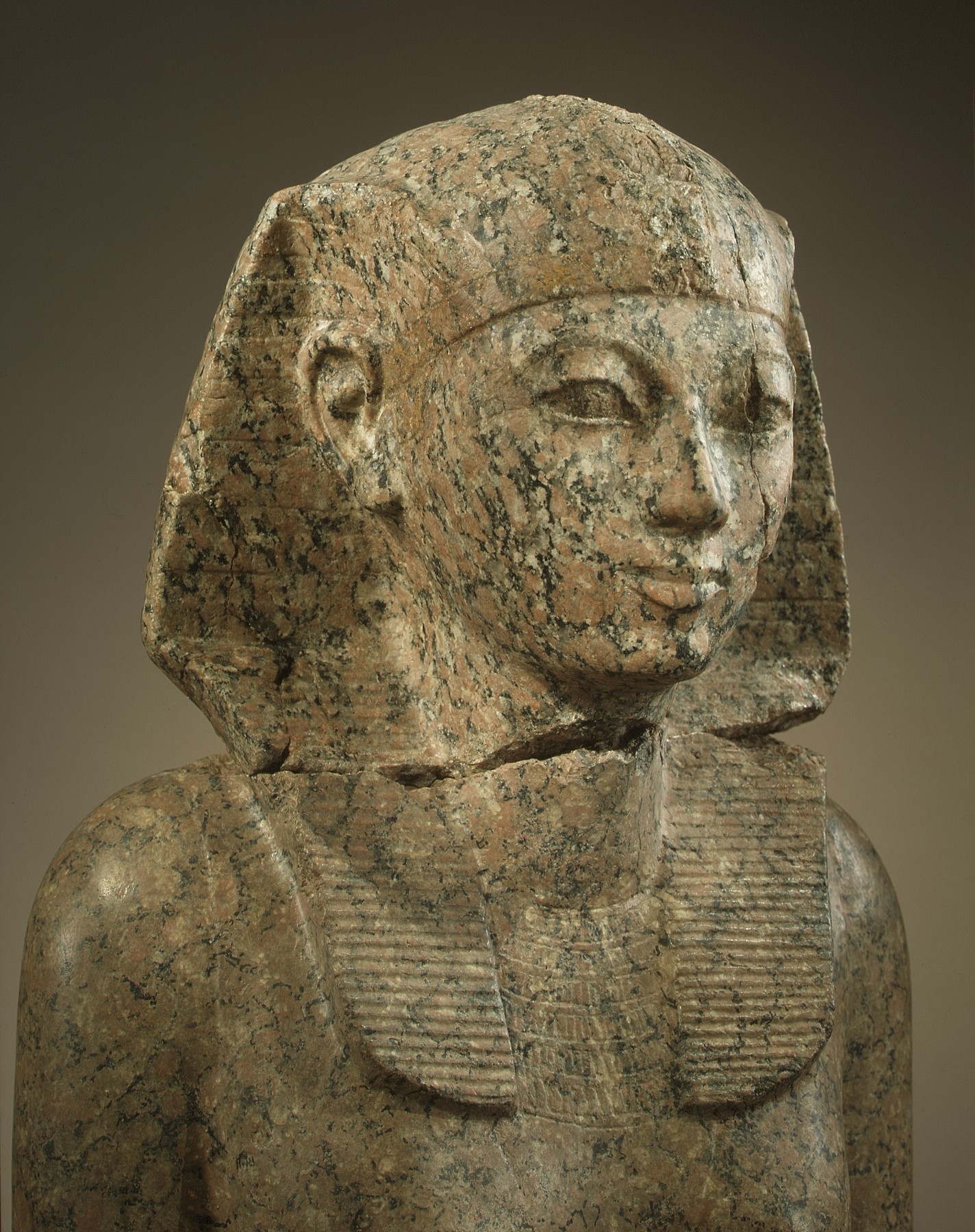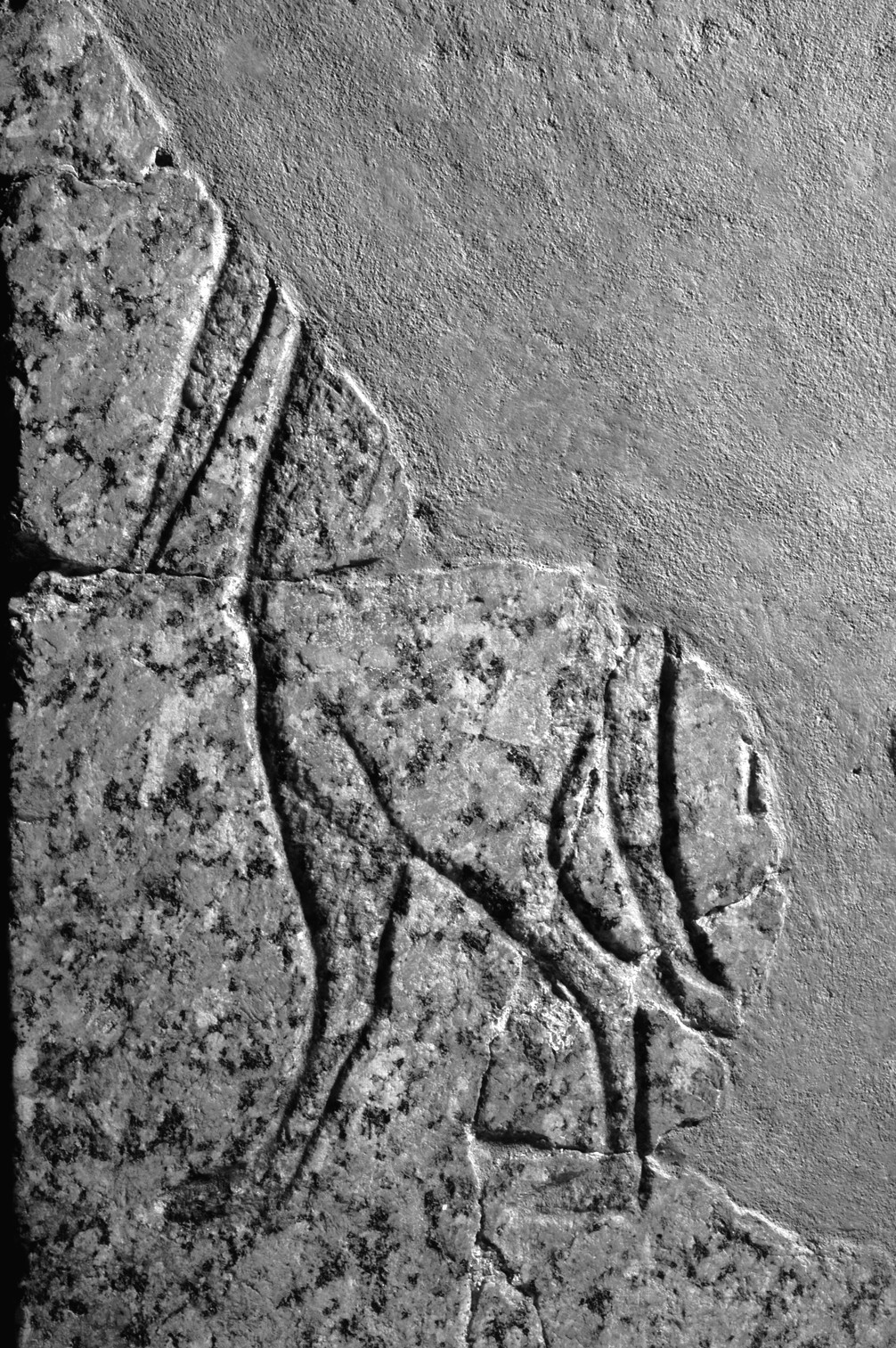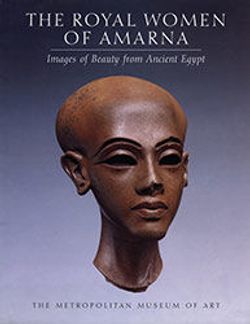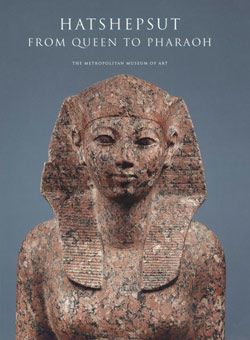The Female Pharaoh Hatshepsut
New Kingdom
This graceful, life-size statue depicts Hatshepsut in female attire, but she wears the nemes–headcloth, a royal attribute usually reserved for the reigning king. In the columns of text inscribed beside her legs on the front of the throne, she has already adopted the throne name Maatkare, but her titles and epithets are still feminine. Thus, she is "Lady of the Two Lands" and "Bodily Daughter of Re." On the back of the throne, part of an enigmatic scene is preserved which probably consisted of two back-to-back goddesses. The goddess has the body of a pregnant hippopotamus with feline legs and a crocodile tail appears behind her legs. Although this resembles Taweret, the goddess who protects women and children, it is probably Ipi, a royal protector who appears in the same position on a statue of the Dynasty 17 king Sebekemsaf I (about 1575 B.C.) in the British Museum.
The pose of the statue, seated with hands flat on the knees, indicates that it was intended to receive offerings and it was probably placed in one of the Temple's chapels. In more public areas, such as the processional way into the temple, colossal sphinxes (31.3.166), kneeling (30.3.1) and standing statues (28.3.18) represent Hatshepsut as the ideal king, a young man in the prime of life. This does not mean that she was trying to fool anyone into thinking that she was a man. She was merely following traditions established more than 1500 years earlier. In fact, the inscriptions on the masculine statues include her personal name, Hatshepsut, which means "foremost of noble women," or a feminine grammatical form that indicates her gender. She had also been in the public eye since childhood, first as the daughter of king Thutmose I, then as principal wife of her half-brother Thutmose II, then as regent to her nephew/step-son Thutmose III, and finally as pharaoh. Only one other statue of Hatshepsut depicts here entirely as a woman (30.3.3).
In the early 1920s the Museum's Egyptian Expedition excavated numerous fragments of this statue near Hatshepsut's temple at Deir el-Bahri in western Thebes. The torso, however, had been found in 1869 and was in the Rijksmuseum van Oudheden in Leiden. In 1998, the Leiden torso and the MET's portions of the statue were reunited for the first time since the original was destroyed in about 1440 B.C.
Due to rights restrictions, this image cannot be enlarged, viewed at full screen, or downloaded.
This artwork is meant to be viewed from right to left. Scroll left to view more.








